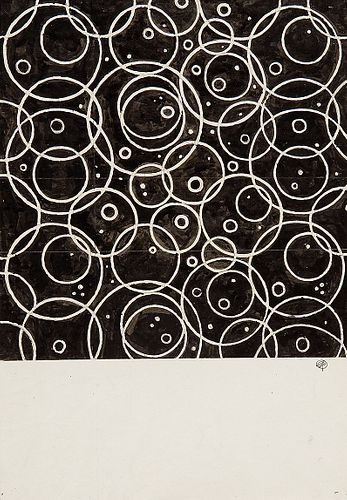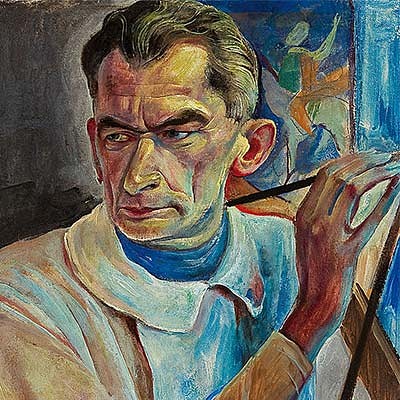JOSEF HOFFMANN* (Pirnitz 1870 - 1956 Vienna)
Lot 21
Estimate:
EUR€700 - EUR€1,500
$752.69 - $1,612.90
Absentee vs Live bid
Two ways to bid:
- Leave a max absentee bid and the platform will bid on your behalf up to your maximum bid during the live auction.
- Bid live during the auction and your bids will be submitted real-time to the auctioneer.
Bid Increments
| Price | Bid Increment |
|---|---|
| EUR€0 | EUR€10 |
| EUR€100 | EUR€50 |
| EUR€700 | EUR€100 |
| EUR€1,000 | EUR€200 |
| EUR€3,000 | EUR€300 |
| EUR€3,600 | EUR€400 |
| EUR€4,000 | EUR€500 |
| EUR€7,000 | EUR€1,000 |
| EUR€16,000 | EUR€2,000 |
| EUR€30,000 | EUR€3,000 |
| EUR€36,000 | EUR€4,000 |
| EUR€40,000 | EUR€5,000 |
| EUR€150,000 | EUR€10,000 |
About Auction
By Widder Auctions
Nov 28, 2022
Set Reminder
2022-11-28 10:00:00
2022-11-28 10:00:00
America/New_York
Bidsquare
Bidsquare : Viennese Art Nouveau, Expressionism, Modern Art
https://www.bidsquare.com/auctions/widder-auctions/viennese-art-nouveau-expressionism-modern-art-10414
Widder Auctions office@widderauktionen.com
Widder Auctions office@widderauktionen.com
- Lot Description
JOSEF HOFFMANN*
(Pirnitz 1870 - 1956 Vienna)
Ornamental composition
indian ink and pencil/paper, 41.8 x 29.6 cm
monogrammed JH, assembled on paper
verso stamp ATELIER OB. BAUR. PROF. ARCH. DR. h.c. JOSEF HOFFMANN, inscribed D/66
provenance: Carla Hoffmann, private collection Vienna
ESTIMATE #Euro 700 - 1.500
STARTING PRICE #Euro 700
Josef Hoffmann, a student of Otto Wagner, was one of the central figures of Viennese Modernism as an architect and designer. In 1903, together with Koloman Moser and the industrialist Fritz Waerndorfer, he founded the Wiener Werkstaette (WW), modeled on the British Arts and Crafts Movement and under the influence of Viennese Art Nouveau. Hoffmann, a friend of Gustav Klimt and Anton Hanak, among others, remained one of the WW's most important designers until its bankruptcy in 1932. The Wiener Werkstaette, also referred to as Wiener Werkstatt, Vienna Workshop, Wiener Werkstaetten or Wiener Werkstaetten, aimed to unite the entire spheres of human life in design, in the sense of a Gesamtkunstwerk. Its customers were mainly artists and the upwardly mobile Jewish upper and middle classes. Josef Hoffmann's acquaintance with Berta Zuckerkandl led to the first major commission: the Purkersdorf Sanatorium, planned by Viktor Zuckerkandl, Berta's brother-in-law, west of Vienna. Among the WW staff were about a dozen women who were crucial to the change in style from Art Nouveau to Art Déco in the 1920s, e.g. Vally Wieselthier, Gudrun Baudisch, Reni Schaschl, Hilda Jesser and Susi Singer. Josef Hoffmann survived the Nazi period unscathed despite hostility from the Nazi architectural ideologist Paul Schmitthenner. He was commissioned by the Reich Chamber of Fine Arts to further develop the Vienna Arts and Crafts Association (a Nazi successor organization to the Austrian Werkbund) as its artistic director. To this end, an "artistic experimental institute" was founded in 1941, where young artisans could further their education under Hoffmann's guidance. After the war, in 1948, Hoffmann founded the oesterreichische Werkstaetten as the successor to the Wiener Werkstaette und Werkbund (oeWB), of which he had been a member until 1920. Hoffmann's gravestone was designed by Fritz Wotruba. The present composition is probably a design for a fabric for a wallpaper. Along with Andy Warhol, Hoffmann would thus be one of the few great artists of the 20th century to have designed wallpapers.
PLEASE NOTE:
The purchase price consists of the highest bid plus the buyer's premium, sales tax and, if applicable, the fee of artists resale rights. In the case of normal taxation (marked #), a premium of 24% is added to the highest bid. The mandatory sales tax of 13%, for photographys 20%, is added to the sum of the highest bid and the buyer's premium. The buyer's premium amounts to 28% in case of differential taxation. The sales tax is included in the differential taxation. - Shipping Info
-
We will send you the invoice shortly after the auction. As soon as we have recieved the amount, the art can be picked up at Johannesgasse 9-13, 1010 Vienna. Please note that the buyer is responsible for pick-up and shipping of the lot. Should you wish to ship your items, please contact: Mailboxes Email: oper@mbe-co.at Tel: 01 5128855 Please note that storage fees may apply, should the pieces not be picked up within 14 days after invoicing for domestic and 28 days for international transportation. Our team will be happy to assist you with any further information at office@widderauktionen.com or at 0043 676 555 66 10.
-
- Buyer's Premium



 EUR
EUR CAD
CAD AUD
AUD GBP
GBP MXN
MXN HKD
HKD CNY
CNY MYR
MYR SEK
SEK SGD
SGD CHF
CHF THB
THB












